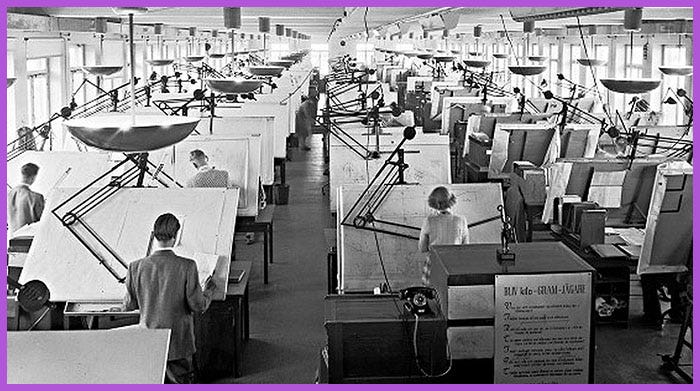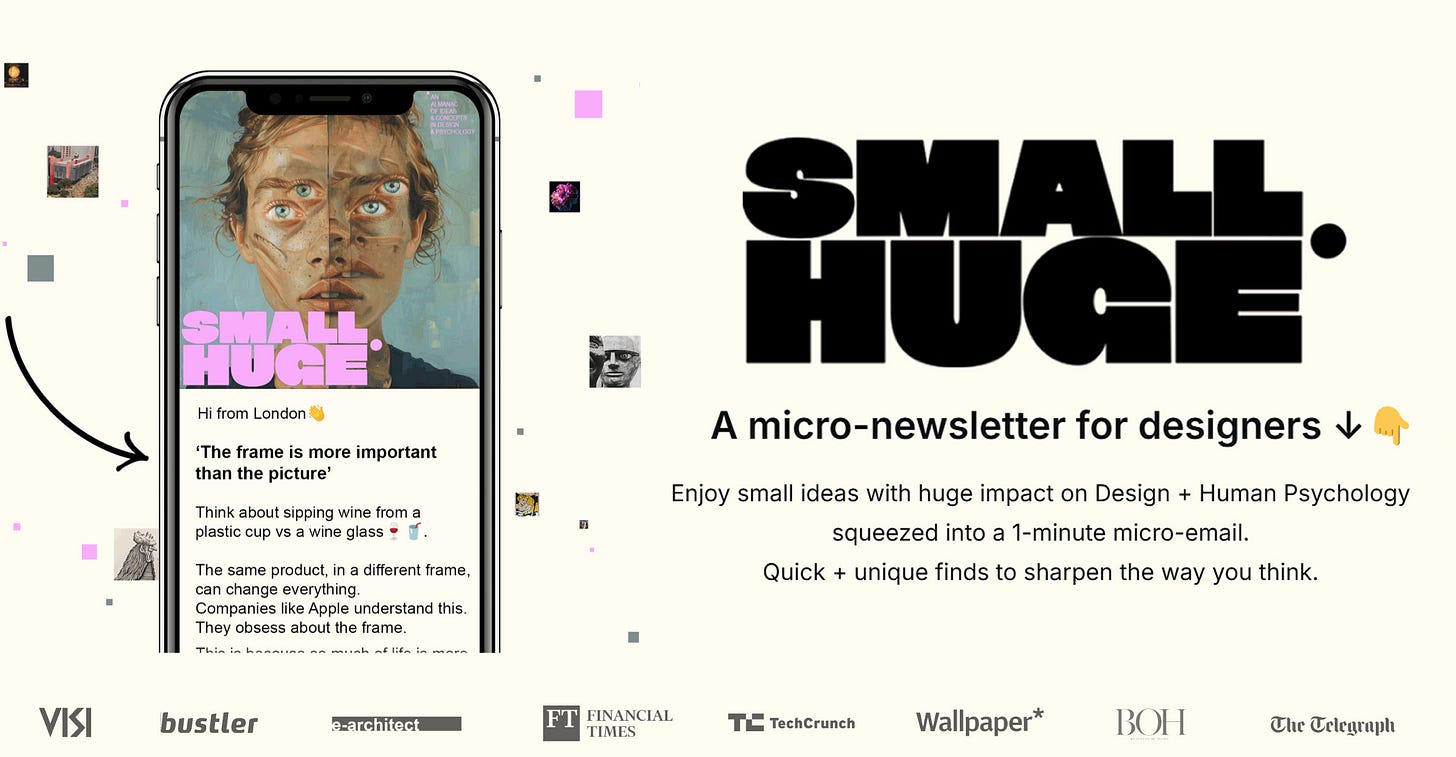The Architect's drawing board is dead, and the next victim is? 💀
Today the physical sample library is dying. Like the drawing board, its death will unlock a new category of virtual sampling and a new world of creativity, efficiency, and sustainability.
Hey
I'm Guy, I’m Co-Founder of Mattoboard and Partner of KSR Architects & Interior Designers. I have been a designer for 2 decades and I am a masters design mentor at the Royal College of Art and write a micro-newsletter for designers called SMALL HUGE.
The architect’s drawing board is dead.
It died a long time ago, but when it did, it opened a whole new world of creativity and efficiency.
The results quite literally changed the world, not just for designers but all of us.
And now there is a new victim.
Just to be clear, I’m not talking about those squeaky, erasable whiteboards.
Drawing boards were huge steel tables used for technical drafting. They had pivots and hinges so you could adjust the angle of the table, raise it up or lower it down.
Designers would hunch over these tables, drawing by hand for weeks.
Every angle - carefully measured.
Every line - perfectly straight.
Every detail and material - labelled.
It was a skillfully learned craft. Perhaps, even an art form.
Looking back, the nostalgia of ink on paper and hand-drawn lettering gives us a warm and fuzzy feeling inside. And it’s true, sometimes slower work is better work.
But really, it sucked.
Any adjustment to a design was an absolute nightmare, often requiring designers to redraw hundreds of drawings. Changes to a design were so time-consuming that good suggestions were often ignored or dismissed, even if it meant the design would suffer. I won’t even mention the waste.
Exploring new ideas and concepts quickly was limited to the slow, tedious, and inflexible drawing board. Many young and creative designers would have been fired simply because they could not express themselves on that orthogonal drawing table.
So much creative potential was lost over a blunt tool.
Then came CAD (computer-aided design) and eventually 3D modelling. Over time these new technologies would replace the drawing board. This change unlocked a new era of creative expression. New shapes became possible, changes -no matter the size - became easier, and designing became faster and iterative.
There was no turning back. Things felt good.
The new efficiency and speed of CAD gave designers their freedom back. Their creativity could flow unrestricted by the physical constraints of their drawing boards. More designers could progress their careers, improve their skills, and launch their businesses from home.
The death of the drawing board and the switch to CAD has completely reshaped the buildings, cities, and homes we live in today.
Looking back, it quite literally changed the world.
Now another death and switch is coming.
The death of physical sampling and the switch to virtual sampling at the concept stage.
With this switch, another era of speed, efficiency, entrepreneurship, and creativity will be unlocked for physical-based designers (PBDs), including Architects, Interior Designers, Stage and set designers, landscape designers, real estate developers, decorators, renovators, product designers, and even fashion designers.
Looking forward 4 years from now, today is an amazing time to be a designer.
Here is how this future is unfolding…
First off, let me set the scene with another analogy.
Remember the days when we used to carry a heavy backpack full of books? Each book was a world of its own, but it also added weight to our shoulders.
Then, we digitised books and put them in an e-reader, like a Kindle or iPad. This lightened our load and opened up a universe of reading with just a few taps.
Before that, we digitised music, and with the iPod, we got “1,000 songs in our pocket”. Finally, we could throw away our CD boxes and stop caring about the album we left at Dave’s house.
In a similar way, our world of interior design and architecture is evolving. We're moving from the physical samples of wood, marble, metals, tiles, handles, and faucets that fill our studios and clutter our workspaces to something much lighter yet infinitely more expansive. A 3D VSample is a digitised sample of a product or material—a 3D digital twin that responds to light, texture, and shadows in a 3D scene to resemble the real thing.
First, we digitised books into e-books, then we got the e-reader, and then we got a book recommendation engine like Amazon.
First, we digitised albums, then we got the iPod, and then we got a music recommendation engine like Spotify.
See the pattern?
First, we digitise the physical sample (VSample), then we get a virtual studio, and then we get the recommendation engine.
The VSample will create a virtual material library where every material you can imagine is at your fingertips, to experience in a palette without the waste and the wait of physical samples.
Imagine being able to mix, match, and marvel at materials online and in real-time, changing designs as easily as flipping a page in an e-book or changing styles as easily as switching a playlist on Spotify. Where your style and preferences are expanded upon, and sharing your work with clients and teams as easily as Google Docs.
If you can design confidently before you need to order a physical sample, you will design more and waste less.
Our mission at Mattoboard is to make this dream a reality, turning the heavy backpack of physical samples into a light, agile, digital tool that empowers designer’s creativity and preserves our planet.
Today the physical sample library is dying. Its death will unlock a new category of virtual sampling and a new world of flexibility, efficiency, sustainability and creativity.
For the A&D industry, this is more than just an upgrade. It will become a new way of thinking, designing, and creating, where the only limit is your imagination and how quick you can click.
We are excited to be serving the design industry and hope you will share the mission with us!
We will share more of our thoughts on the 3D web and its impact on visual industries here.
Best
G





